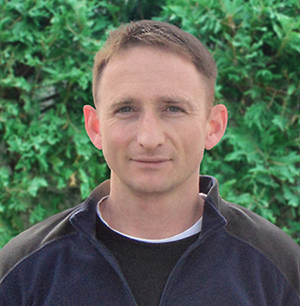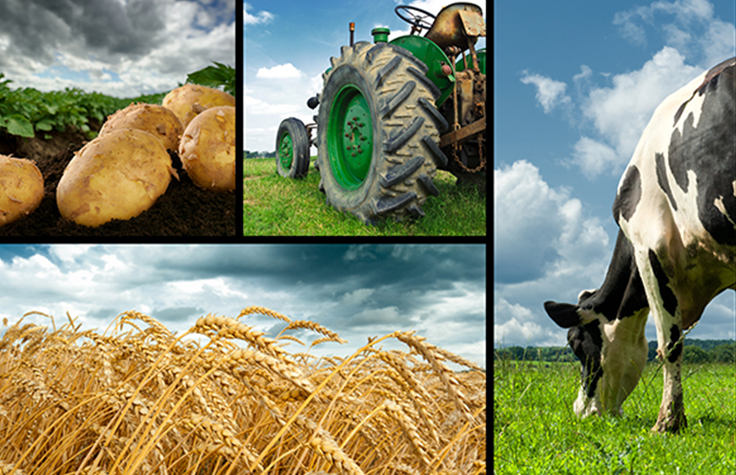High-Throughput Genotyping Informs Selective Breeding of Livestock
Introduction
Lincoln, Nebraska is located in the American agricultural heartland, about 150 miles from the geographic center of the contiguous United States. It is also home to Neogen Corporation’s GeneSeek subsidiary, which is responsible for genotyping more than 8000 livestock samples per day for farmers worldwide. The GeneSeek team genotypes beef and dairy cattle, sheep, pigs, and various crops. The data it generates supports selective breeding practices that increase yield and improve nutrition value, while requiring fewer resources to maintain herds.
According to Jeremy Walker, MS, Director of Business Development and Marketing at Neogen/GeneSeek, 2007 marked the turning point for GeneSeek’s genotyping productivity. “In 2007, we were collecting an average of 138,000 genotypes per day using single-base extension assays on a matrix-assisted laser desorption/ionization/time of flight (MALDI/TOF) mass spectrometer. We switched to Infinium custom arrays when they became commercially available and now collect more than 200 million genotypes per day.”
iCommunity spoke with Jeremy about the value of genomic screening of breeding populations and the benefits that Infinium iSelect® arrays provide GeneSeek as it develops new custom array designs.

Q: When did you begin using genomics technologies?
Jeremy Walker (JW): I began using high-throughput genomics and genomic-based technologies in graduate school. Whole-genome selection has been a principal focus of Neogen/GeneSeek since 2008. The technology is used extensively in animal and plant selective breeding.
Q: How has the field of agrigenomics changed over the past decade?
JW: One of the most exciting changes has been the development of low-cost, high-throughput arrays that enable marker-assisted screening of many genotypes simultaneously. Just 10 years ago, there were only a handful of dairy farmers and animal breeding companies using DNA testing results to make selective breeding decisions. They were performing parentage testing and analysis of the few known causative variants at the time, such as the black/red coat color MC1R locus.
Today, high-throughput arrays enable screening of hundreds of thousands of dairy cattle per year. These arrays can evaluate close to 50,000 markers, providing farmers and breeders with data about the genetic merit of more than 50 different traits.
Technology advances and the lower cost points of today’s arrays provide farmers and breeders with unprecedented knowledge to selectively breed for superior animals. The data from these arrays enable them to raise livestock that produce more protein on less feed in a shorter amount of time, and are less prone to genetic-based abnormalities.
Q: What are the objectives of agrigenomics?
JW: Genomics is an important tool in maintaining agricultural sustainability without disrupting the ecosystem. Genomic improvement goes hand in hand with increasing food security, the mission of Neogen. The growing international population is demanding higher quality protein and food products. At the same time, the amount of arable land is decreasing. One goal of genotyping is to create more efficiencies to span that gap by supporting the creation of more and better food using fewer resources. Neogen is genotyping more than two million animals annually with this goal in mind.
Q: What are the advantages of screening breeding populations?
JW: Screening breeding populations using genomic information accelerates genetic gain when compared to traditional breeding evaluations. It is especially important when the desired increases in genetic improvement are for traits that are not highly heritable, such as daughter pregnancy rate for selecting the best dairy cattle bulls. The results for animal breeders are higher profit margins and the elimination of genetic-based diseases.
Q: What technologies are supporting the growth of agrigenomics?
JW: Low-cost, high-throughput, high-capacity next-generation sequencing (NGS) technologies have increased the amount of plant and animal DNA sequencing data. That data have informed the development of high-quality, predictive fixed arrays that support high-volume, less expensive population screening for genetic variation. Low-cost, high-throughput fixed arrays, such as the Illumina Infinium XT-based technology, are contributing to the success of agrigenomics and genomic screening of breeding traits.
Q: What prompted you to focus on certain livestock species in developing custom genotyping arrays?
JW: We’ve created GeneSeek Genomic Profiler (GGP) custom arrays for livestock where whole-genome selection technology is used for breed improvement.1-3 Today, that includes dairy and beef cattle, pigs, and sheep.
Our focus is on continually improving our array products. We are constantly looking for ways to improve the imputation accuracy of our GGP arrays. In addition, our scientists work with industry and academic leaders to identify and include new causative variants that have a proven, measurable impact on hundreds of traits.
Q: What is the importance of imputation accuracy in genomic selection?
JW: Genomic prediction can positively impact genetic progress, with the accuracy of genomic prediction impacting the speed of progress. Accuracy is influenced by many things, including the strength of the phenotype data, the size of the reference population, and knowledge of the pedigree structure. However, the accuracy of imputation is important when using low-cost, low-density arrays.
Q: Why did you choose Infinium custom iSelect technology as the foundation of your arrays?
JW: Neogen/GeneSeek uses Infinium custom arrays for most of our custom array products. Our decision was driven by the robustness of the technology and the cost effectiveness of the platform. We achieve average call rates of > 99.3% for all tissue types and 99.9% concordance when genotyping sample replicates across different processing batches. In addition, we obtain high assay conversion rates from the submitted design through chip production and benefit from the high-throughput capability of the platform.
Q: What tools do you use to optimize array design and analysis?
JW: We developed state-of-the-art methodologies and tools to optimally design single nucleotide polymorphism (SNP) chips and perform large-data analyses. One example is the development of a multiple-objective, local-optimization (MOLO) for optimal selection of SNPs for genotype imputation and genomic selection. We also developed cost-effective, data-parallel methods for estimating whole-genome SNP effects. These analysis tools facilitate building reliable, high-throughput genomic prediction systems in animal and plant species for our customers.
Q: How does microarray analysis compare with genotyping by sequencing (GBS)?
JW: Infinium fixed arrays have been a very important part of our product portfolio for the last 10 years. We continue to evaluate new technologies, including GBS, to provide accurate, robust, and low-cost data to our clients who have an interest in marker-assisted selection/whole-genome selection. We have yet to find a better tool than Infinium chemistry for our high-volume data pipelines. We do feel that GBS, although more limited for us, has an important role and one that we continue to investigate.
Q: What agrigenomics discoveries have been made using GeneSeek Genomic Profile (GPP) arrays?
JW: I am not always sure what our clients do with the genomic information that we generate. We are involved with many academic-based genome-wide association studies (GWAS). We often include the discoveries that are made in our high-volume custom cattle and pig arrays as value-added markers to enhance the selection decisions of our GPP array clients.
In a broader sense, we believe that the work we do at Neogen/GeneSeek triggers a wide variety of advanced agrigenomic studies. When researchers investigate a plant or animal genome, they are often conducting those studies within tight financial constraints. As a result, they must rely on the cost-effective technological expertise that we provide. I believe our ability to deliver ever-increasing amounts of plant and animal genomic data, at lower cost, will continue to trigger agrigenomic investigations and discoveries.
Learn more about the Illumina products mentioned in this article:
Infinium Agrigenomics BeadChips, www.illumina.com/content/dam/illumina-marketing/documents/applications/agrigenomics/information-sheet-array-consortia-agrigenomics-web.pdf
Infinium XT BeadChip, www.illumina.com/products/by-type/microarray-kits/infinium-xt.html
Infinium iSelect Custom Genotyping BeadChips, www.illumina.com/products/by-type/microarray-kits/infinium-iselect-custom-genotyping.html
References
- Neogen launches GGP Bovine 50K for beef seedstock. Neogen. www.neogen.com/en/neogen-launches-ggp-bovine-50k-for-beef-seedstock. February 1, 2017. Accessed on March 22, 2017.
- New cost-effective DNA test available to beef seedstock industry. Neogen. www.neogen.com/en/new-cost-effective-dna-test-available-to-beef-seedstock-industry. October 6, 2016. Accessed on March 22, 2017.
- Neogen selected by Scottish Gov’t for beef herd improvement program. Neogen. www.neogen.com/en/neogen-selected-by-scottish-govt-for-beef-herd-improvement-program. October 27, 2016. Accessed on March 22, 2017.
